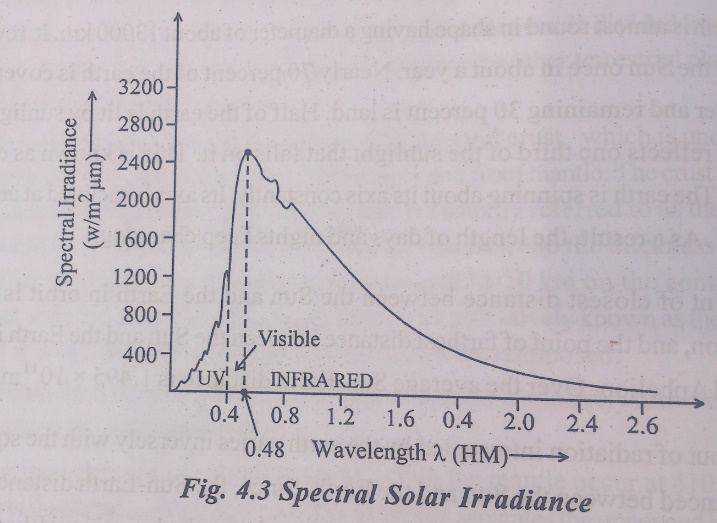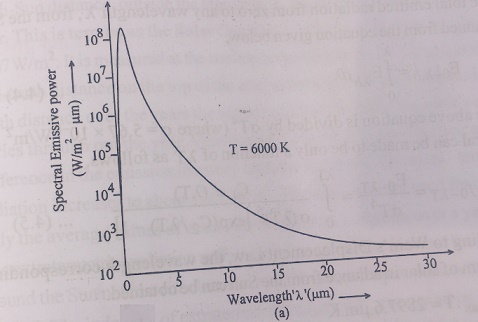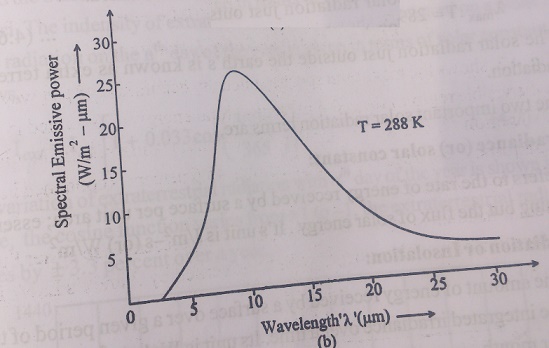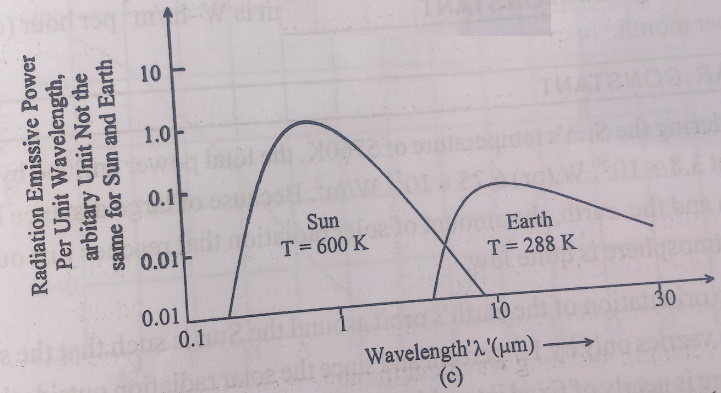Chapter: Electric Energy Generation and Utilisation and Conservation : Solar Radiation and Solar Energy Collectors
Solar Spectrum
SOLAR SPECTRUM
The
simplified picture of the Sun, its physical structure, temperature and density
gradients indicate that the Sun, infact, does not function as a blackbody
radiator at a fixed temperature.
Rather,
the emitted solar radiation is the composite result of the several layers that
emit and absorb radiation of various wavelengths.
The
photosphere is the source of most solar radiation and is essentially opaque, as
the gases, of which it was composed, are strongly inonized and able to absorb
and emit a continuous spectrum of solar radiation.
In
addition to the total energy in the solar spectrum (i.e, Solar Constant) it is
useful to know the spectral distribution of extraterrestrial radiation, that is
the radiation that would be received in the absence of the atmosphere.

Fig.
4.3, shows the maximum spectral intensity occurs at 0.48ÎĽm wave length (l)
in the visible region. About 6.4 percent of total energy is contained in Ultra Violet
(UV) region (l<0.38ÎĽm),
another 48 percent is contained in the visible region (0.38ÎĽm < l
< 0.78ÎĽm) and the remaining 45.6 percent is contained in the Infrared region
(l
> 0.78ÎĽm).
The
solar irradiance from the black body, in the present cas either Sun or Earth,
as a function of wavelength (μm) can be governed by Planck’s Law of Radiation
given by,

The
two important solar radiation terms are,
1) Irradiance (or) solar constant:
It
refers to the rate of energy received by a surface per unit area; essentially
it is nothing but the flux of solar energy. It’s unit is J/m2-s(or)
W/m2.
2) Irradiation or Insolation:
It
is the amount of energy received by a surface over a given period of time. Thus
it is the integrated irradiance over a time. Its unit is W-hr/m2
per hour (or) per day (or) per month.



Related Topics